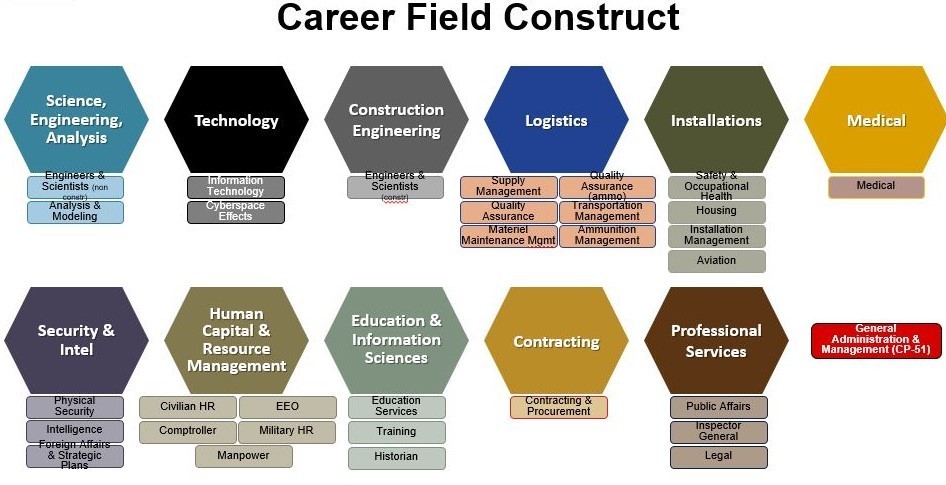
In a world where staying fresh is key, old-school tech giants are at a turning point. They need to either adapt or risk becoming irrelevant. This is where focusing on talent development really matters. Did you know that 70% of companies that focus on developing their people see better profits? It's a clear sign of how powerful it is to invest in your team. We'll look into some ideas that can help these tech giants stay relevant by bridging the gap between their past successes and future goals. Strategic talent development isn't just about keeping up; it's about creating a culture that thrives on growth and change. So, whether you're leading a legacy tech company or just curious about what keeps businesses evolving, there's a lot to learn here. Let's dive into the key ideas that could help revive and sustain these legendary companies!
Summary: This article discusses talent development theories and their application to revitalize legacy tech giants, focusing on strategies to enhance workforce skills and adaptability. It includes FAQs addressing common concerns about talent development in established technology companies.
Talent Development Theories: Foundations for Reviving Legacy Tech Giants
Talent Development in Legacy Tech: Understanding the Challenges
In legacy tech companies, talent development is about upskilling and reskilling employees to meet new tech demands and business models. These companies, often rooted in tradition, face challenges like outdated skills and resistance to change. Thus, ongoing talent development is crucial. It can significantly boost employee retention, with 94% of employees more likely to stay if their growth is supported. For example, one legacy software company used virtual reality (VR) training to help employees learn new coding techniques safely, leading to quicker skill adoption and better retention.
Key Talent Development Theories for Legacy Tech
Several theories guide effective talent development in legacy tech companies, focusing on personalized learning, continuous improvement, and aligning employee growth with company goals.
- Generative AI is key, creating custom learning paths based on roles and aspirations.
- Theoretical frameworks stress adaptive learning environments that adjust to employee performance and business needs.
- AI-driven platforms can tweak training content based on progress, ensuring skill development aligns with strategic goals.
Human Capital Theory: Investing in Employee Growth
Human Capital Theory suggests that investing in employee education boosts productivity and company success. For legacy tech firms, this means prioritizing continuous learning programs that fit organizational goals. By viewing employees as valuable assets, companies can justify investments in upskilling and reskilling to prepare for future challenges.
Social Learning Theory: Collaboration and Mentorship
Social Learning Theory emphasizes learning through observing and interacting with others. In legacy tech, mentorship, collaborative projects, and peer learning can support this. Encouraging knowledge sharing fosters growth and innovation, breaking down silos and promoting cross-department collaboration.
Transformational Leadership Theory: Inspiring Change
Transformational Leadership Theory focuses on inspiring and motivating employees to reach their potential. Leaders in legacy tech can apply this by setting a vision for change and encouraging creativity and risk-taking. By being role models and offering support, transformational leaders can drive the cultural shifts needed for talent development.
Case Studies: Revitalizing Legacy Tech Giants Through Talent Development
Real examples of legacy tech companies revitalizing their talent strategies offer valuable insights. Companies using immersive tech like VR and AR for training see better engagement and faster upskilling. Legacy tech giants using AI tools can identify skill gaps and tailor development programs, boosting workforce agility.
- A legacy hardware manufacturer used AI to map skills and launched targeted learning modules, increasing innovation project participation by 30%.
IBM's Skills Transformation: Adapting to AI and Cloud
IBM, a tech pioneer, has transformed to stay competitive. They recognized the need to reskill for AI and cloud computing. IBM's "SkillsBuild" offers personalized learning paths and badges, promoting continuous skill growth. By focusing on both technical and soft skills, IBM adapts to new market demands while maintaining its legacy strengths.
Microsoft's Cultural Shift: Embracing a Growth Mindset
Microsoft's change under CEO Satya Nadella illustrates the power of cultural change in talent development. By promoting a growth mindset and collaboration, Microsoft transitioned from a competitive, siloed culture to one valuing learning and innovation. Platforms like Microsoft Learn and cross-functional teams help employees gain new skills and contribute to success in cloud computing and AI.
General Electric's Digital Industrial Strategy: Leading in Digital Transformation
General Electric (GE), known for industrial strength, embraced digital transformation to stay relevant. GE's focus on digital talent through programs like the "Digital Technology Leadership Program" is key. This combines technical training with leadership development, preparing employees to lead digital initiatives. By merging digital skills with industrial expertise, GE leads in the digital industrial sector.
Integrating Theories with Talent Development Strategies
To effectively integrate talent development theories with practical strategies, legacy tech companies need a multi-faceted approach. Combining personalized AI-driven learning with immersive simulations enables skill acquisition and continuous engagement. Aligning development initiatives with business goals ensures workforce growth supports organizational transformation.
Customized Learning Paths: Aligning Skills with Goals
Creating customized learning paths based on employee needs and company goals is crucial. This involves assessing skills gaps and offering targeted training. Digital platforms can facilitate personalized learning, offering flexibility and accessibility.
Mentorship and Coaching: Enhancing Social Learning
Mentorship and coaching programs enhance the application of Social Learning Theory. Pairing experienced employees with newcomers fosters knowledge transfer and growth. Mentors provide guidance, feedback, and encouragement, helping mentees develop essential skills.
Leadership Development Programs: Cultivating Transformational Leaders
Leadership programs grounded in Transformational Leadership Theory can cultivate new leaders in legacy tech. These should focus on emotional intelligence, strategic thinking, and team inspiration. Investing in leadership development ensures organizations can drive change and innovation.
Leveraging Technology for Effective Talent Development
Technologies like AI, VR, AR, and blockchain are transforming talent development with immersive, personalized, and secure learning. AI platforms offer real-time feedback and adaptive content, enhancing learning. Blockchain secures digital credentials, boosting trust in qualifications. A legacy financial software firm used blockchain for credential verification and AI coaching to enhance skill validation.
Learning Management Systems (LMS): Streamlining Training
Learning Management Systems (LMS) are crucial for delivering and managing training. They provide a central platform for accessing materials, tracking progress, and getting feedback. LMS helps streamline training and ensure consistent content delivery.
Artificial Intelligence and Machine Learning: Personalizing Learning
AI and Machine Learning personalize learning by analyzing data and recommending tailored content. AI platforms identify skill gaps, suggest courses, and predict future learning needs. This personalization boosts engagement and aligns training with career goals.
Virtual Reality (VR) and Augmented Reality (AR): Enhancing Skill Acquisition
VR and AR offer immersive learning experiences that enhance skill acquisition. In legacy tech, they simulate complex scenarios and provide hands-on training. VR can train employees in safe environments, reducing real-world risks. Incorporating VR and AR in talent development provides engaging training.
Future Skills and Leadership Mindsets for Legacy Tech Success
As tech evolves, legacy tech companies must focus on future-ready skills and leadership mindsets. They prioritize agility, digital literacy, and continuous learning to stay competitive. Leadership must embrace innovation, foster growth, and leverage tech for transformation.
Digital Literacy and Technical Skills: Essential for Competitiveness
Digital literacy is increasingly important as tech permeates business. Legacy tech employees must be proficient in digital tools to remain competitive. Skills in AI, data analytics, and emerging tech are crucial for future business models.
Adaptability and Continuous Learning: Embracing Change
Adapting to change and embracing continuous learning is key in legacy tech. Employees must be open to new skills and technologies. Organizations can support this by fostering a culture of innovation and encouraging lifelong learning.
Inclusive Leadership: Driving Diversity and Innovation
Inclusive leadership is vital for diverse and innovative teams. Legacy tech companies need leaders who value diversity and create inclusive environments. Inclusive leaders drive cultural change and ensure equitable talent development. A legacy enterprise that focused on digital transformation and AI literacy in leadership programs saw stronger innovation and market responsiveness.
By focusing on these future skills and leadership mindsets, legacy tech companies can succeed in a rapidly changing tech landscape.
FAQs on Talent Development for Legacy Tech Giants
Integrating Modern Talent Management Models in Legacy Tech Giants
Legacy tech giants often struggle with their old ways when trying to adopt modern talent management. But with the right strategies, they can shift to practices that fit today's workforce.
Embrace Targeted Talent Acquisition for Legacy Tech Giants
To keep up, these companies can focus on targeted talent acquisition. This means:
- Teaming up with universities
- Prioritizing diversity
- Looking for talent worldwide
By doing this, they can widen their talent pool and bring fresh ideas into the mix. For example, working with schools lets them tap into new talent, ensuring a steady stream of skilled folks.

Implement Effective Talent Development Strategies
Development strategies are key and include:
- Reskilling
- Fast-tracking high-potential employees
- Mentoring
- Offering leadership and technical programs
These efforts help employees keep learning and adapting to new tech and methods, which is crucial in a fast-changing industry. Take Cisco's "The Skills Bridge" program, for instance. It retrains employees for new tech roles, saving $61 million in recruiting and keeping valuable knowledge in-house.
Leverage Data-Driven Talent Management Approaches
Using data-driven methods helps personalize career growth and skill development. With data, companies can make smart decisions about talent management, placing people in roles where they can really shine. This boosts employee satisfaction and helps the company perform better overall.
Integrate Skills-First Talent Practices
Moving beyond job titles to focus on needed skills helps:
- Widen the talent pool
- Improve job matching
By zeroing in on skills, companies attract a broader range of candidates and ensure a better fit between what employees can do and what the job requires.
Adopt a Stakeholder-Centric Talent Management Approach
A stakeholder-focused approach aligns new talent management tech with existing workflows and addresses key concerns within the company. Engaging stakeholders makes it easier to integrate new systems and practices, leading to better talent management.
The Impact of Company Culture on Retaining Top Tech Talent
Company culture is crucial for keeping top talent, especially in the competitive tech world. A positive and inclusive culture boosts employee satisfaction and loyalty, cutting down on turnover and drawing in top professionals.
Implement Initiatives to Enhance Company Culture
Culture initiatives like:
- Engagement programs
- Wellness efforts
- Recognition schemes
- Flexible work options
are key retention strategies. By valuing employee well-being, companies can improve retention and motivate their workforce.

Align Culture with Talent Development Strategies
Top tech companies align their culture with talent strategies to create environments that support continuous learning. This helps retain talent by offering growth opportunities, boosting job satisfaction and loyalty.
Foster Internal Mobility and Cross-Functional Talent Development
Encouraging internal mobility and cross-functional development offers diverse experiences and career growth, reducing turnover. By letting employees explore different roles, companies keep their workforce engaged and motivated.
Promote Transparency and Equitable Talent Advancement
A culture of transparency about skills and fair advancement paths rebuilds trust and retains employees. By clearly communicating career paths and offering equal advancement opportunities, companies boost satisfaction and loyalty.
Strategic Workforce Planning for Competitive Edge in Legacy Tech
Strategic workforce planning is key for legacy tech companies to stay competitive. By aligning workforce strategies with business goals, they ensure they have the right talent to drive growth and innovation.
Identify Skill Gaps and Develop Tailored Talent Strategies
Workforce planning helps pinpoint skill gaps and develop strategies for:
- Acquisition
- Development
- Retention
- Organization
By knowing the skills needed for the future, companies can tailor their talent strategies to stay competitive.
Anticipate Future Talent Needs in Tech
Planning helps companies foresee future talent needs, like focusing on cybersecurity and cloud roles, which are crucial for staying ahead in tech. By anticipating trends, they ensure they have the right talent for new opportunities.
Integrate Skills Intelligence with Business Objectives
Integrating skills intelligence with business goals gives companies confidence in having the right talent to adapt to market changes. This alignment helps them quickly respond to industry shifts, keeping their competitive edge.
Support Organizational Restructuring for Talent Optimization
Workforce planning supports restructuring, job redesign, and automation to boost productivity and free up human capacity for more valuable work. By streamlining processes, companies can focus on innovation and growth, positioning themselves as tech leaders.
Learn more about strategic workforce planning and how it helps in identifying skill gaps to stay competitive.